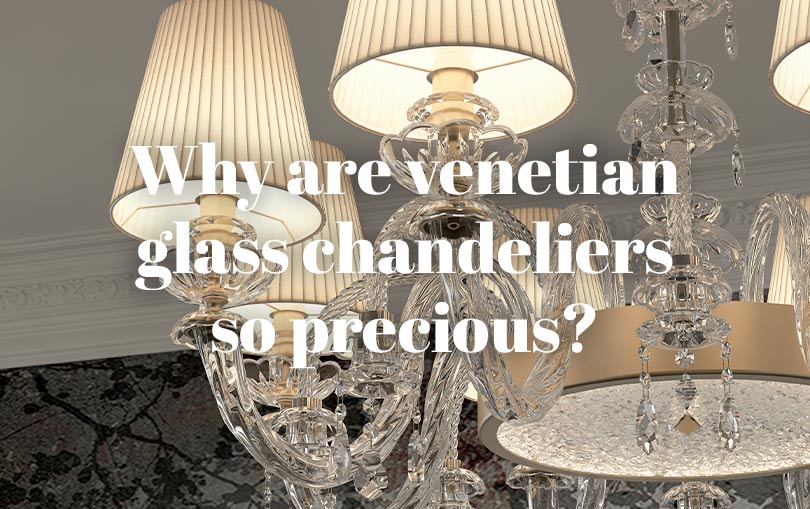Venetian glass chandeliers what makes them so unique?
VENICE, THE ART OF GLASS PROCESSING AND MURANO MASTERS GLASSMAKERS
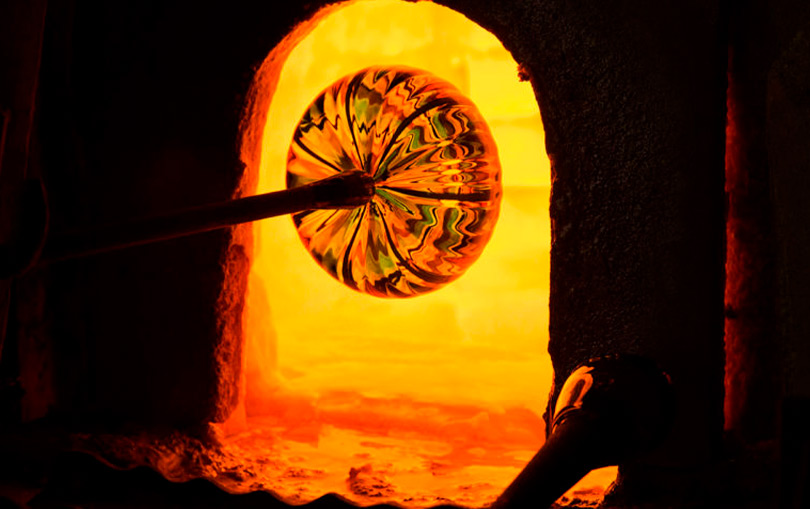
When we talk about Venetian glass, we cannot avoid thinking of Murano and its master glassmakers. Yet, how actually the art of glass was born and why is Venetian glass so special?
Which are the first Venetian chandeliers and how can we understand that they are original ones?
To better understand the virtues and the value of Murano glass chandeliers, as well as the special Venetian glass processing, we must start from its history and from the working techniques as well as from tradition, thanks to which procedures were handed down from generation to generation, from Master glassmaker to servant, through the centuries, until today
MURANO AND ITS TRADITION OF GLASS PROCESSING
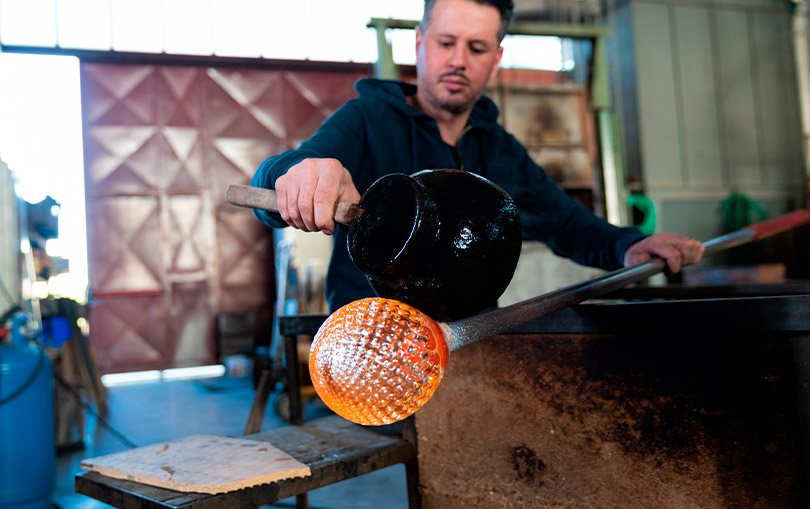
By taking a glance at Venice and at its Lagoon, it immediately appears clear that it is the perfect place to find inspiration: colors and reflexes of the water can be found in the transparency and shades of Venetian glass.
Until the year 1000, glass processing was exclusively dedicated to producing objects such as bottles in blown glass – the “fiole” – with a rounded body and a very long neck.
To be able to talk about a true art of glass we must get to 1271, when the first statute to regulate rights and obligations for the management of arts and professions in town was issued.
In this period, production mainly dealt with tableware, glass items decorated with small elements in melted glass and bottles, yet you could already perceive the special creativity and the artistic imagination of Master glassmakers, who made Venice so famous thanks to their manufactured goods.
In 1291, many fires originating from the glass furnaces led the Council of the Magistrates of Old Justice to move them in the island of Murano, which this way became the venue designated to glass production and therefore the hometown of great Master glassmakers.
Today of course furnaces are not only in Murano anymore, yet the island holds a special fascination and it is known worldwide for its history, its beauty and the beautiful glass works of art which made it famous.
In 1450, Angelo Barovier, glassmaker coming from an ancient Murano family tradition, invented a new process to produce a very clear glass that at first was named crystal and then became Venetian glass.
It was the first true breakthrough for Venetian Master glassmakers, who continued during all the 16th Century to develop new techniques, such as retortoli filigree (filigree with volutes and spirals) and the reticello filigree which made Murano glass amongst the most requested in the courts and within aristocratic environments of all Europe.
The following centuries saw a real explosion as to produce glass in Murano, with a jubilation of shapes and colors for cups, fruit bowls and frames for mirrors.
The 20th century saw a new breakthrough and many artists, painters a designers from Italy and Europe in general – Picasso, Braque, Chagall, just to mention a few – gave birth to real works of art in Murano glass.
Today Murano glass is a symbol and a communicative tool which finds its expression also within decorative lighting.
HOW WAS THE MURANO BLOWN GLASS BORN
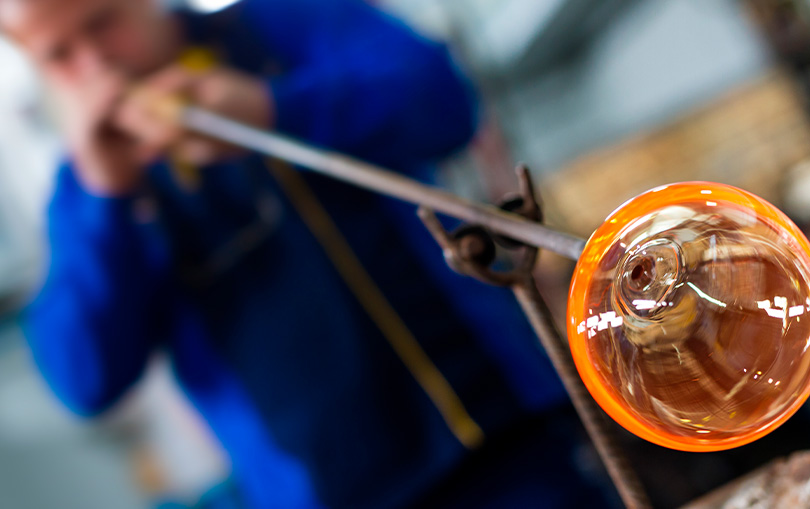
Venetian glass is a sodium glass, meaning that to silica – a sand that by means of casting transforms itself into glass – soda is added to enable casting at lower temperatures.
These two raw materials must be mixed amongst one another in a solution that requires one night to be ready and when the mixture is done, stabilizers are added, as well as dyes or bleaches and /or possible opacifiers.
The so obtained compound is placed in the oven at a temperature of approximately 1.400° so as to be ready in the morning, to be processed. The resulting paste remains ductile until it reaches 500° and the glass craftsmen (Master, servants, and apprentices) must work with extreme coordination as for timings and movements, with the same grace and rhythmic of an orchestra following its director.
The work of art and all the elements that have been created can be refined at cold temperatures from grinding rollers for polishing and other finishes.
But what and how many are the techniques mostly used by Venetian Master glassmakers?
Let’s briefly take a look at them!
THE TECHNIQUES OF VENETIAN GLASS PROCESSING
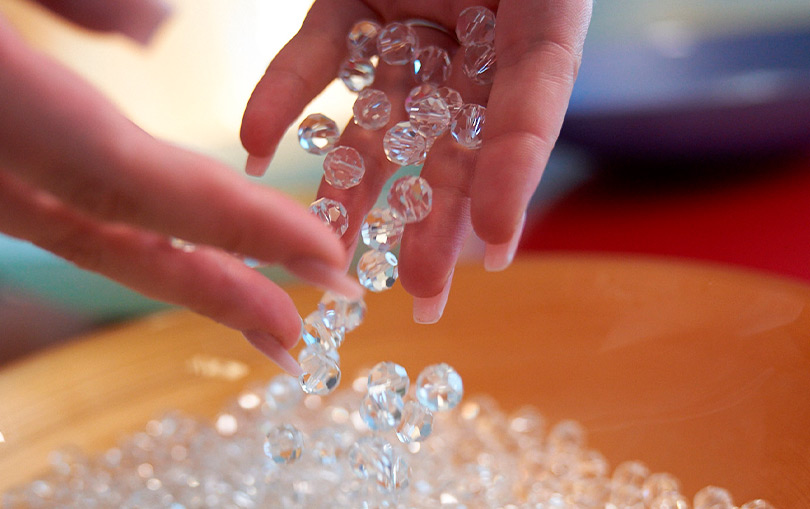
The traditional glass processing techniques really are many and it would be impossible to explain them all in only one article, therefore, we are now going to see them only briefly yet promising that we will get deeper into this topic with the next publications.
BLOWN GLASS
Right since the beginning, the glass blowing became the preferred technique for any high-end processing. The glass artisans from Murano developed and extraordinary capacity in modeling at high temperatures and are able to create objects and elements with great elegance and refinement. Amongst the various working procedures, we may find the retortoli filigree and the reticello filigree that create the effect of a delicate crochet within the glass surface.
MURRINA
It is a very antique technique, prior to the blown glass processing techniques, which consists in the casting of monochrome tiles or of polychrome glass rod sections according to a drawing, that enable to obtain a very colorful glass texture.
GLASS BEADS
These are small beads – the “conterie” – made as spherical or with a sharp edge, obtained by sectioning some small, perforated tubes pulled within the furnace for a length of several meters and then processed by hand with the lampworking technique.
LAMPWORKING TECHNIQUE
The colored glass rod is softened with fire by means of a blowpipe to be then worked so as to become of any desired shape.
ENGRAVING
It is a technique which is preferably used with colorless or slightly colored crystal by means of a graffito that has a diamond top or a small and deeper metallic wheel.
The applications of Murano glass are endless yet one of the most important certainly is connected to lighting and to the creation of both classical and modern chandeliers.
MURANO GLASS CHANDELIERS: ORIGINS AND UNIQUENESSES
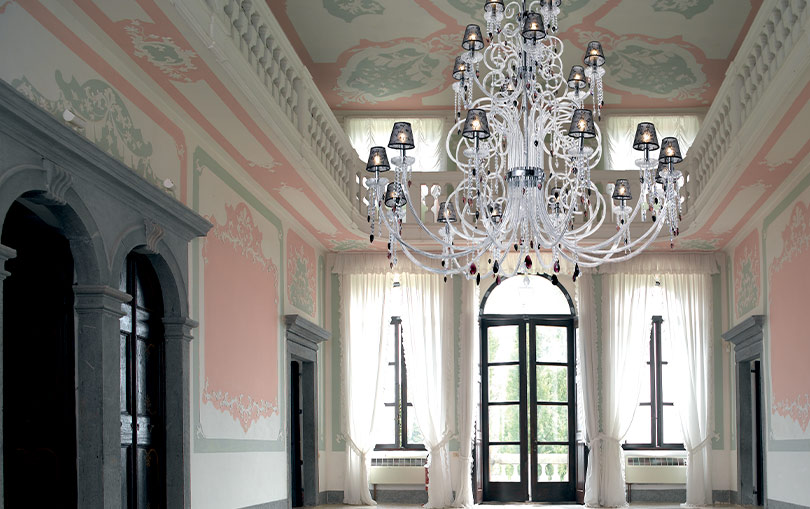
The first evidence of Venetian glass chandeliers dates back to 1700 and immediately became very popular for their delicacy and elegance, substituting iron, brass, and wood chandeliers.
In the same period the Bohemian crystal, with its spectacular capacity of refracting light, started to spread all around Europe and also in some parts of Italy. Murano glass workshops therefore answered with creativity and imagination, producing new sources of light.
One of the most emblematic examples of a Murano glass chandelier was the one made for King Federico IV of Denmark, still hung up in his palace today.
The typical characteristic of the traditional Murano chandelier is the entanglement of arabesques of leaves, flowers and fruits enriched by colored glass according to the classic working techniques (jealously kept!).
This type of chandelier usually has an original architectural concept with an empty space at its center, some long arms, and decorations all around the central body. Decorations are made by small clear elements in blown glass, either colored or not.
VENETIAN GLASS CHANDELIERS BY PATRIZIA VOLPATO, BETWEEN TRADITION AND INNOVATION
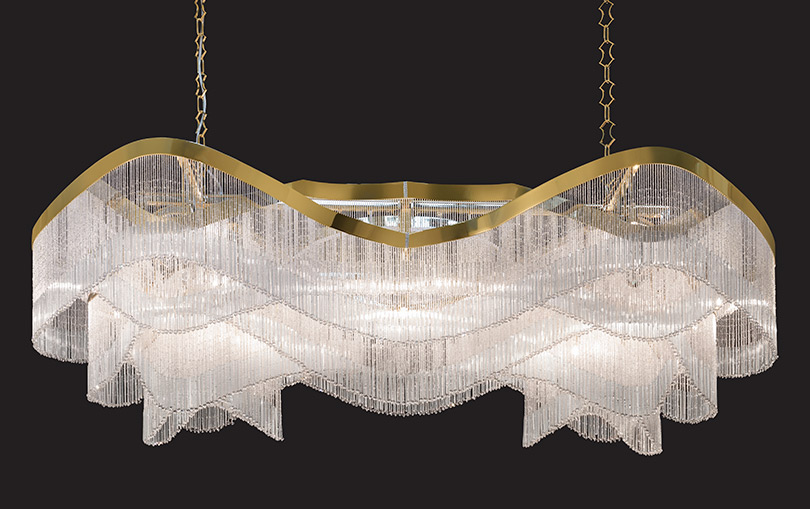
The story and the tradition of Venetian glass art are some of the most original and distinctive elements of our Brand.
An example of such elements is ICONICA that merges the elegance of classic and modern designs, whilst the collection INTRECCI recalls with a modern style the architecture of the Venetian classic chandelier.
The processing with glass beads is offered by the refined and luxury collection VENEZIA that proposes lighting items made with fringes of glass beads entirely handmade and GIRASOLE that offers a floral design with beads made of faceted glass.
All our creations use original Venetian glass, produced in Venice according to the antique traditional techniques, with an innovative design that employs the most advanced technology and that doesn’t forget the needs of the environmental sustainability.
Visit our shop website and discover all the proposals of the collections by Patrizia Volpato .


